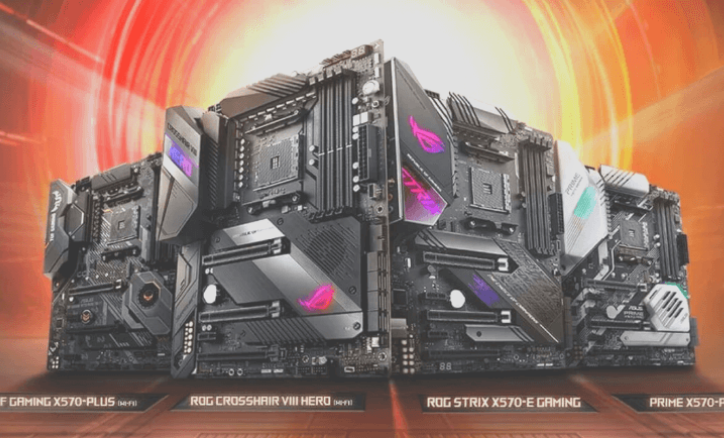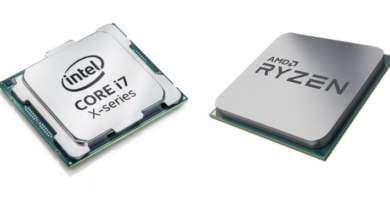What I look for in next-gen motherboards

It was only Intel chipset releases that ushered in the cutting edge technology everyone was excited about prior to Ryzen’s arrival in AMD motherboards. Up until this spring, a new flagship chipset was released every 12 to 18 months, but the last two years have passed in a blur. Intel introduced the Z270, Z370, and X299 chipsets in 2017, while AMD introduced the X370 and X399 chipsets to support Ryzen and Threadripper processors.
The fact that AMD motherboards have finally caught up to Intel boards despite the enormous pressure on the industry has been a welcome development for AMD fans everywhere. There will be new motherboards from AMD and Intel in the next few months, so I’ve been thinking about what I’d like to see in terms of models and features in the coming years.
Recently, some high-end features have made their way into more affordable models, and this is a development I hope continues. To give one example, boards with integrated I/O shields get extra points in my book because they look great on the test bench and save you from having to use your fingers to operate the shield. If they’re going to be standard, they should be integrated into the boards themselves, and I’d like to see them on a lot more boards, especially at lower price points.
Heatsinks for the M.2
These are some of my favourites for a variety of reasons. MSI’s MEG Z390 Ace is the first integrated/bundle M.2 heatsink integrated to cool both sides of the SSD – the latest versions allow your SSD to run cooler than it otherwise would under load. Also, because they look so good and hide the often-unappealing SSDs, I’m hoping that they become more widely available soon.
Exceptional characteristics
My wish list includes a number of unique features, so I’ll move on to the next one now. Asus’ DIMM.2 module, which houses two M.2 SSDs in a large heatsink-clad module and is easy to remove, is probably my favourite feature of this generation of boards.
A feature like this is usually only found on the most expensive motherboards, which is unfortunate because even the ROG Maximus XI Gene, Asus’s most affordable board with DIMM.2, costs £300.
A micro-ATX PC with an Intel CPU has features like these that make me drool, and the Gene has won one of our top awards for its unique design and feature set because of that drool-worthy appeal.
My main gripe with the current crop of motherboards is that they are all too similar, both in terms of design and functionality. A feature like the Asus DIMM.2 is exactly the kind of thing I’d like to see more manufacturers include.
EFIs that are better-looking, more functional, and more feature-rich are on the way.
It has been a staple of modern PCs for some time now, and while we miss the yellow text on blue background, the additional features in a modern EFI mean that building and tweaking a PC is simpler and more rewarding. It’s just that, at the moment, I’m having issues with EFI systems from nearly every manufacturer. The best layouts and graphics come from MSI and Asus, in my opinion.
As a result, their designs have been around for a few generations now, and they’re starting to feel a little tired. Even though some new features like an AI overclocking tool have been added, they look and feel nearly identical to those we saw five years ago.
Starting with a fresh new look, I’d like to see some improvements to the overall design, which has become a little stale. This is an area where other manufacturers can do better, as well, as Asus and MSI are still lagging behind Gigabyte in terms of fan control options and granularity.
Even Gigabyte’s EFIs, which I’ve been harping on about for years, look dated when compared to the competition. In classic mode, especially, overclocking takes longer due to the additional menu layers you must navigate through in order to access available options.
BIOS Flashback is becoming more commonplace.
There have always been advantages to being able to update your BIOS without a compatible CPU, but I’m seeing more and more cases where this feature is putting people in trouble. As a matter of fact, I’ll be writing about this in a separate article, but at the moment, I’m most concerned about low-end Intel boards, as many new boards out there don’t do what they’re supposed to when paired with one of Intel’s new 9th gen CPUs.
Though some motherboards have the ability to boot into the EFI and perform firmware updates, others have failed miserably at this step. For some reason, AMD motherboards with the B450 chipset are much more likely to have BIOS Flashback issues than those with Intel’s Core i5-9400F processors, which is an excellent value for money with six cores.



